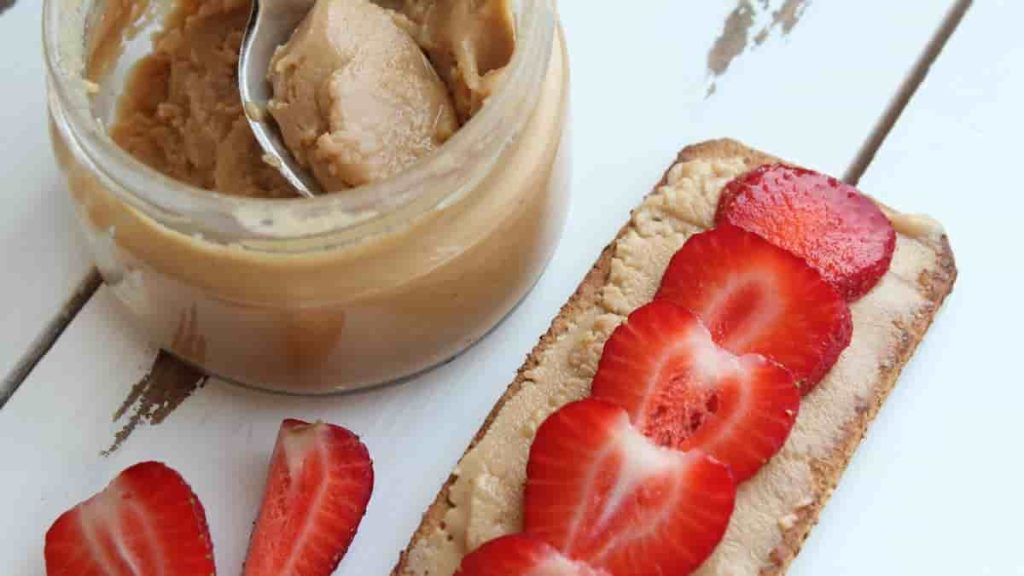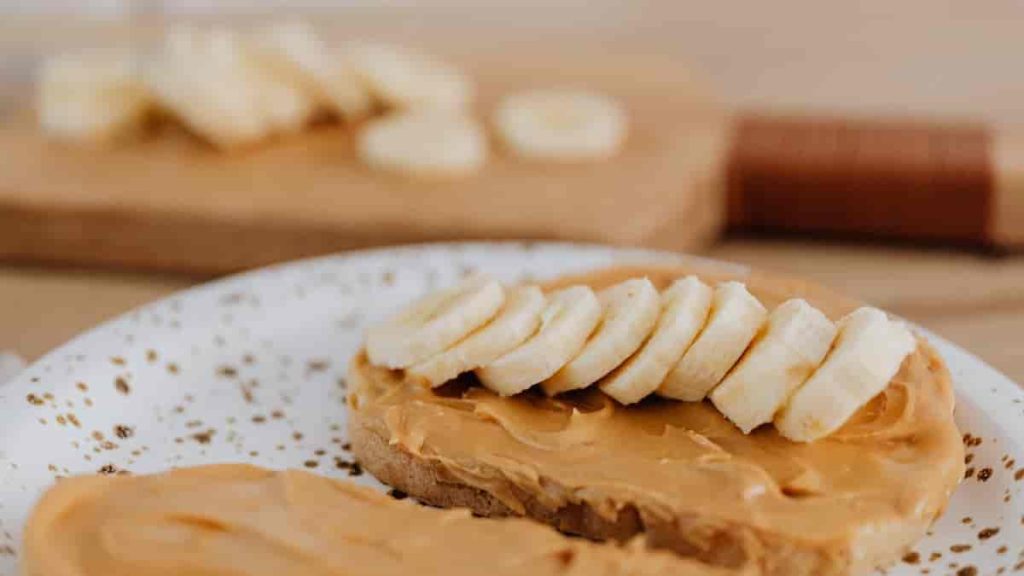Here is your complete guide to nutrition facts of a peanut butter and jelly sandwich.
Introduction to Nutrition Facts of a Peanut Butter and Jelly Sandwich
Peanut butter and jelly sandwiches have been a beloved staple in households and school lunches for generations. Not only are they delicious, but they also provide a combination of nutrients that can contribute to a healthy diet. In this article, we will explore the nutrition facts of a peanut butter and jelly sandwich and dive into the various aspects that make it a popular choice. Let’s discover the nutritional components, health benefits, potential concerns, comparisons, and variations of this classic sandwich.
Nutrition Facts of a Peanut Butter and Jelly Sandwich
A peanut butter and jelly sandwich is a simple yet satisfying combination of carbohydrates, proteins, fats, vitamins, and minerals. Let’s break down the nutritional components of this beloved sandwich:
Carbohydrates: Nutrition Facts of a Peanut Butter and Jelly Sandwich
- Carbohydrates are the primary source of energy for our bodies.
- The sandwich consists of carbohydrates from bread and jelly.
- The bread provides complex carbohydrates, while the jelly contributes simple carbohydrates.
Proteins: Nutrition Facts of a Peanut Butter and Jelly Sandwich
- Proteins play a crucial role in building and repairing body tissues.
- Peanut butter, a key ingredient in the sandwich, is a rich source of plant-based protein.
Fats: Nutrition Facts of a Peanut Butter and Jelly Sandwich
- Fats are an essential part of a balanced diet and provide energy.
- Peanut butter contains healthy monounsaturated and polyunsaturated fats.
- The sandwich may also include fats from other ingredients like butter or margarine.
Vitamins and Minerals
- Peanut butter and jelly sandwiches offer a range of vitamins and minerals.
- Peanut butter provides vitamin E, niacin, folate, and magnesium.
- The jelly may contain vitamin C and potassium, depending on the fruit used.
To visualize the nutritional breakdown, here is a table showcasing the approximate values per serving of a typical peanut butter and jelly sandwich:
| Nutrient | Amount per Serving |
|---|---|
| Calories | 350 |
| Carbohydrates | 45g |
| Proteins | 10g |
| Fats | 15g |
| Vitamin E | 4.5mg |
| Niacin | 3.5mg |
| Folate | 40mcg |
| Magnesium | 50mg |
| Vitamin C (varying based on jelly) | 5-10mg |
| Potassium (varying based on jelly) | 50-100mg |

Health Benefits of Peanut Butter and Jelly Sandwiches
While peanut butter and jelly sandwiches are often seen as a nostalgic treat, they do offer several health benefits:
Heart-Healthy Components
- Peanut butter contains monounsaturated fats, which are beneficial for heart health.
- Whole-grain bread used in the sandwich can provide additional heart-healthy benefits.
Nutrient Density
- Peanut butter and jelly sandwiches are nutrient-dense, meaning they offer a range of essential nutrients in a relatively small serving.
- They can contribute to overall nutrient intake and help meet daily requirements.
Antioxidant Properties
- Peanuts, the main ingredient in peanut butter, are rich in antioxidants.
- Antioxidants help protect our bodies against harmful free radicals and support overall well-being.
To further illustrate the health benefits, here is a table highlighting the specific advantages of consuming peanut butter and jelly sandwiches:
| Health Benefit | Description |
|---|---|
| Heart Health | Monounsaturated fats promote cardiovascular health. |
| Nutrient Density | Provides essential nutrients in a compact serving. |
| Antioxidant Protection | Peanuts offer antioxidants to support overall well-being. |
Potential Health Concerns
While peanut butter and jelly sandwiches offer numerous health benefits, there are a few potential health concerns to be aware of:
Allergies and Sensitivities
- Peanut allergies are relatively common and can cause severe reactions in some individuals.
- If you or someone you know has a peanut allergy, it’s essential to find suitable alternatives.
- Additionally, some individuals may have gluten sensitivities and may need gluten-free bread options.
Added Sugars
- Many store-bought jellies contain added sugars, which can contribute to excessive calorie intake and potential health issues.
- It’s important to read labels and choose options with lower added sugar content or consider using natural fruit spreads.
To help understand the potential health concerns better, here is a table summarizing the key points:
| Health Concern | Description |
|---|---|
| Peanut Allergies | Some individuals may have severe peanut allergies. |
| Gluten Sensitivities | Gluten-free alternatives are necessary for some. |
| Added Sugars | Some jellies may contain high amounts of added sugars. |

Comparisons and Variations
Peanut butter and jelly sandwiches offer room for creativity and customization. Let’s explore some comparisons and variations that can make your sandwich even more enjoyable:
Different Types of Peanut Butter
- Natural peanut butter is made from ground peanuts without additives.
- Commercial peanut butter often contains added sugars, oils, or preservatives.
- Choose natural peanut butter for a healthier option with no added ingredients.
Bread Choices
- When it comes to bread, whole-grain options are preferable due to their higher fiber and nutrient content.
- Avoid highly processed white bread and opt for whole wheat, multigrain, or sprouted grain bread.
Jelly Options
- Traditional jellies often contain high amounts of added sugars.
- Look for low-sugar or no-added-sugar options or consider using natural fruit spreads without added sugars or artificial sweeteners.
To present a visual comparison, here is a table summarizing the differences between natural peanut butter and commercial peanut butter:
| Peanut Butter Type | Description |
|---|---|
| Natural Peanut Butter | Made from 100% ground peanuts, without added sugars, oils, or preservatives. |
| Commercial Peanut Butter | Often contains added sugars, oils, or preservatives. |
Frequently Asked Questions (FAQs) about Nutrition Facts of a Peanut Butter and Jelly Sandwich
How many calories are in a peanut butter and jelly sandwich?
A typical peanut butter and jelly sandwich contains around 350 calories per serving.
Read Also: The Nutrition of Zucchini.
Are there any gluten-free options for a peanut butter and jelly sandwich?
Yes, there are gluten-free bread alternatives available for individuals with gluten sensitivities.
Read Also: My Protein Drink.
Can I use almond butter or other nut spreads instead of peanut butter?
Absolutely! Almond butter or other nut spreads can be excellent alternatives for those with peanut allergies or personal preferences.
Read Also: Are Push-Ups Good for Building Muscle?
Are there any low-sugar jelly options for a healthier sandwich?
Yes, some brands offer low-sugar or no-added-sugar jelly options that can be a healthier choice.
Read Also: What Is the AIP Diet?
What is the nutritional value of a peanut butter and jelly sandwich?
A peanut butter and jelly sandwich provides a combination of essential nutrients. Here is a breakdown of the nutritional value:
- Calories: A typical peanut butter and jelly sandwich contains approximately 350 calories per serving.
- Carbohydrates: Each sandwich typically has around 45 grams of carbohydrates.
- Proteins: A peanut butter and jelly sandwich provides approximately 10 grams of protein.
- Fats: The sandwich contains approximately 15 grams of fat, primarily from peanut butter.
- Vitamins and Minerals: Peanut butter contributes vitamin E, niacin, folate, and magnesium, while the jelly may contain vitamin C and potassium, depending on the fruit used.
Read Also: 1 Month Program to Lose Weight.
Are PB&J sandwiches healthy?
Peanut butter and jelly sandwiches can be a part of a healthy diet when consumed in moderation and made with nutritious ingredients. Here’s why they can be considered healthy:
- Nutrient Density: Peanut butter and jelly sandwiches are nutrient-dense, meaning they offer a range of essential nutrients in a relatively small serving.
- Protein: Peanut butter provides plant-based protein, which is beneficial for muscle repair and growth.
- Heart-Healthy Fats: Peanut butter contains monounsaturated fats that can contribute to heart health.
- Vitamins and Minerals: Peanut butter and jelly sandwiches provide various vitamins and minerals, depending on the ingredients used.
It’s important to consider portion sizes and choose whole-grain bread, natural peanut butter, and lower-sugar jelly options for a healthier sandwich.
Read Also: HIIT Cardio vs Steady State.
How many calories is one peanut butter and jelly sandwich?
One peanut butter and jelly sandwich typically contains around 350 calories per serving. However, it’s essential to note that the calorie content may vary depending on the specific ingredients and portion sizes used. To manage calorie intake, consider portion control and balance the sandwich with other nutritious foods throughout the day.
Read Also: The Real Detox Tea.
How many carbs is a peanut butter and jelly sandwich?
A peanut butter and jelly sandwich typically contains approximately 45 grams of carbohydrates. The carbohydrates come from the bread and the jelly used in the sandwich. It’s worth noting that the type of bread and jelly chosen can affect the specific carbohydrate content. Opting for whole-grain bread and choosing jellies with lower added sugar can be healthier options for managing carbohydrate intake.
Read Also: Bone Broth Protein vs Whey.
Can peanut butter and jelly sandwiches be part of a weight-loss diet?
While peanut butter and jelly sandwiches can be part of a balanced diet, it’s important to consider portion sizes and overall calorie intake.
Read Also: Nutrition Facts of Brown Sugar.
Conclusion
Peanut butter and jelly sandwiches are not only a delicious and nostalgic treat but also a source of important nutrients. Understanding the nutrition facts of a peanut butter and jelly sandwich allows us to appreciate its health benefits while being aware of potential concerns. By making informed choices, such as opting for natural peanut butter, whole-grain bread, and lower-sugar jellies, we can enjoy this classic sandwich as part of a balanced diet. Remember to consider individual dietary needs and preferences when preparing and consuming peanut butter and jelly sandwiches.
Read Also: Nutrition Facts of a Turkey Sandwich.

